余润喆 建筑设计 本科预科
2024.07.02
对我来说,建筑是技术与美学的完美融合,是左右脑融合的产物。近年来,人工智能技术的出现,通过其快速的绘图和计算能力彻底改变建筑设计。虽然人工智能可以对行业产生重大影响,但卓越建筑师所具有的独特人文素质仍然是不可替代的。一个真正出色的建筑师需要的不仅仅是工程师的头脑;他们需要一颗富有同情心的心,对多元文化和历史的理解,道德,公共责任感,以及更多。
在项目《解构与重建:战争与和平》该个人探索项目着眼于战争对景观留下的伤痕。怀着对历史战争的浓厚兴趣,我的目标是理解解构——从大规模武器的使用到随后对和平的追求。
另一个项目《透过报摊反思上海不断变化的城市景观》关注的是过去的二十年里,上海的街头变革。报摊,曾经是印刷媒体和社区互动的活跃中心,在我的童年时代是熟悉的景象。它们是人们购买最新期刊并与和蔼的老板进行随意交谈的地方。然而,数字革命已经使这些古雅的象征变得过时,因为它们不敌互联网的蔓延势头而逐渐消失。该项目深入探讨了上海加速的城市节奏与报摊消逝的对立。它是对昔日较慢节奏如何被城市迅速节奏所取代的视觉和概念探索,只留下了过去的回声。
最后在《超现实主义对建筑设计的影响》项目,以我偏爱的艺术家马列维奇及其标志性的超现实主义风格为题材,向他致敬。它旨在解构和重组他的一幅艺术作品,构思出一种能够展现超现实主义对建筑设计潜在影响的装置。
YU Runzhe
Architecture Design
Architecture, to me, is the perfect fusion of technology and aesthetics, engaging both the left and right sides of the brain. In recent years, the advent of AI technology promises to revolutionise architectural design with its rapid drawing and computational capabilities. While AI can significantly impact the industry, the distinctive humanistic qualities that exceptional architects possess remain irreplaceable. A truly outstanding architect needs more than just an engineer's mind; they require a compassionate heart, an understanding of diverse cultures and histories, ethics, a sense of public responsibility, and much more.
In the <Destruction& Construction: War and Peace>, I was focusing on the scars war etches into landscapes, this exploration is personal. With a keen interest in historical warfare, my goal is to understand the full scope of destruction—from the use of massive weaponry to the subsequent quest for peace.
In the second project <Reflecting on Shanghai’s Evolving Landscape Through Newsstand>, my journey growing up in Shanghai over the last two decades has been marked by significant transformations. Newsstands, once vibrant hubs of printed media and community interaction, stood as familiar fixtures in my childhood. They were places where one could purchase the latest periodicals and engage in casual conversation with the congenial proprietor. Yet, the digital revolution has rendered these quaint icons obsolete, as they succumb to the relentless tide of internet proliferation. This work delves into the dichotomy between Shanghai's accelerating urban rhythm and the newsstands' languishing presence. It's a visual and conceptual exploration of how the slower pace of yesteryear is being eclipsed by the city's rapid tempo, leaving only echoes of the past.
The <Suprematism Impact on Architectural Design> concludes with a tribute to my preferred artist, Kazimir Malevich, and his iconic style of Suprematism. It aims to disassemble and reconfigure one of his artworks, conceptualizing a device that illustrates Suprematism's potential impact on architectural design.”
PORTFOLIO
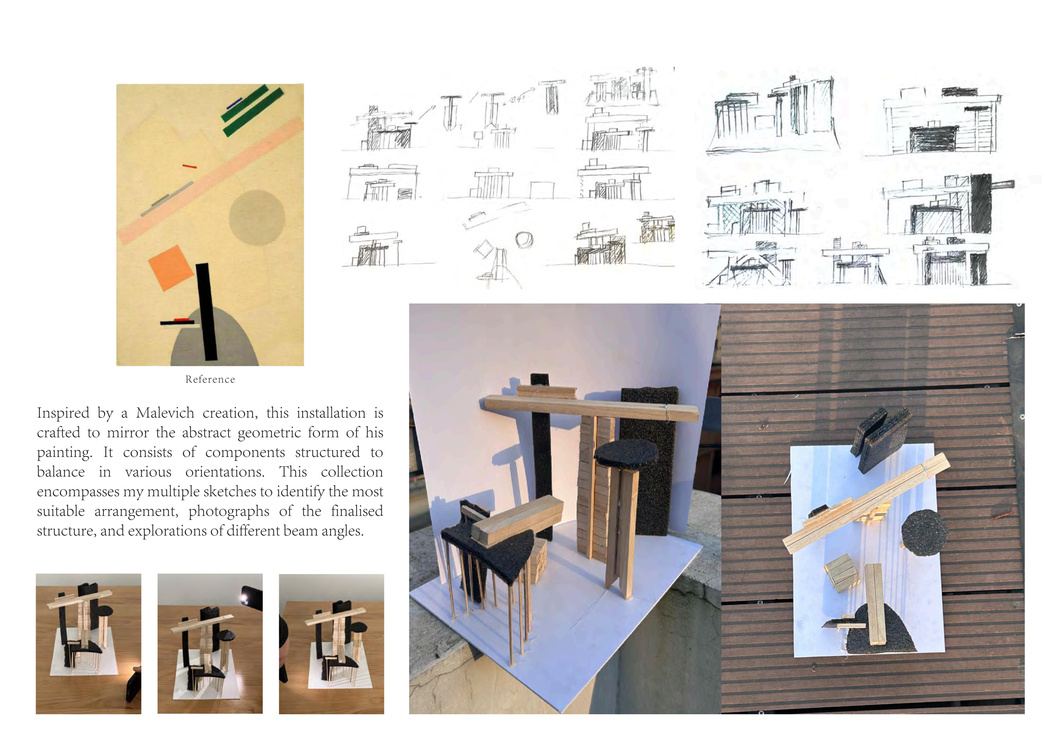
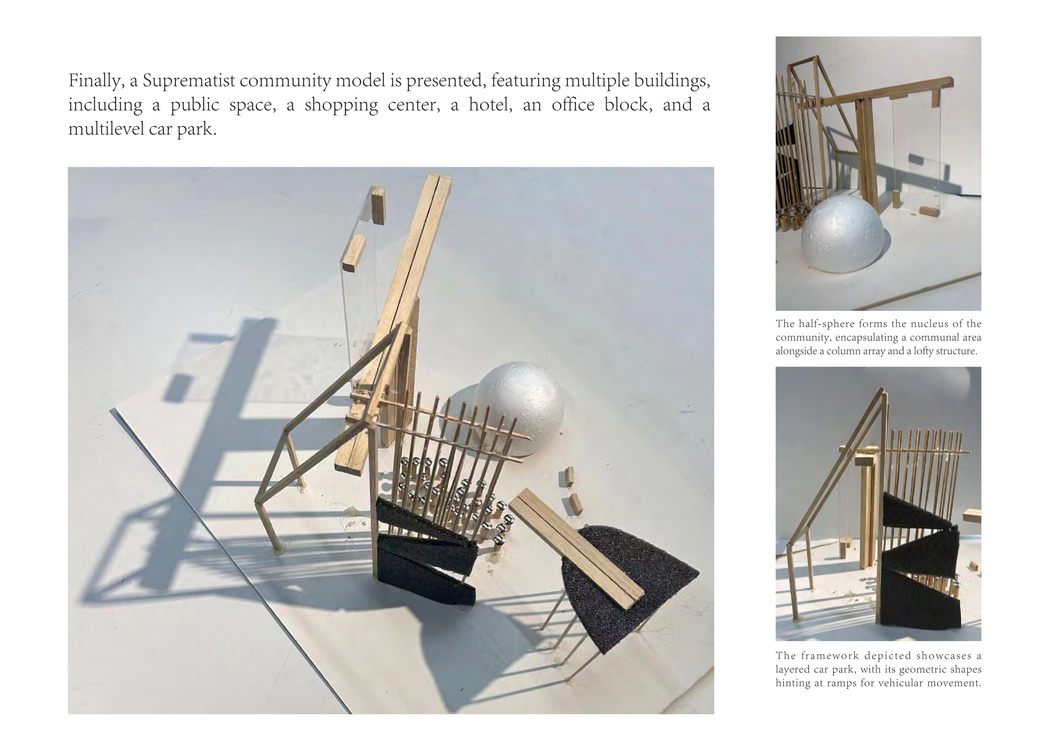
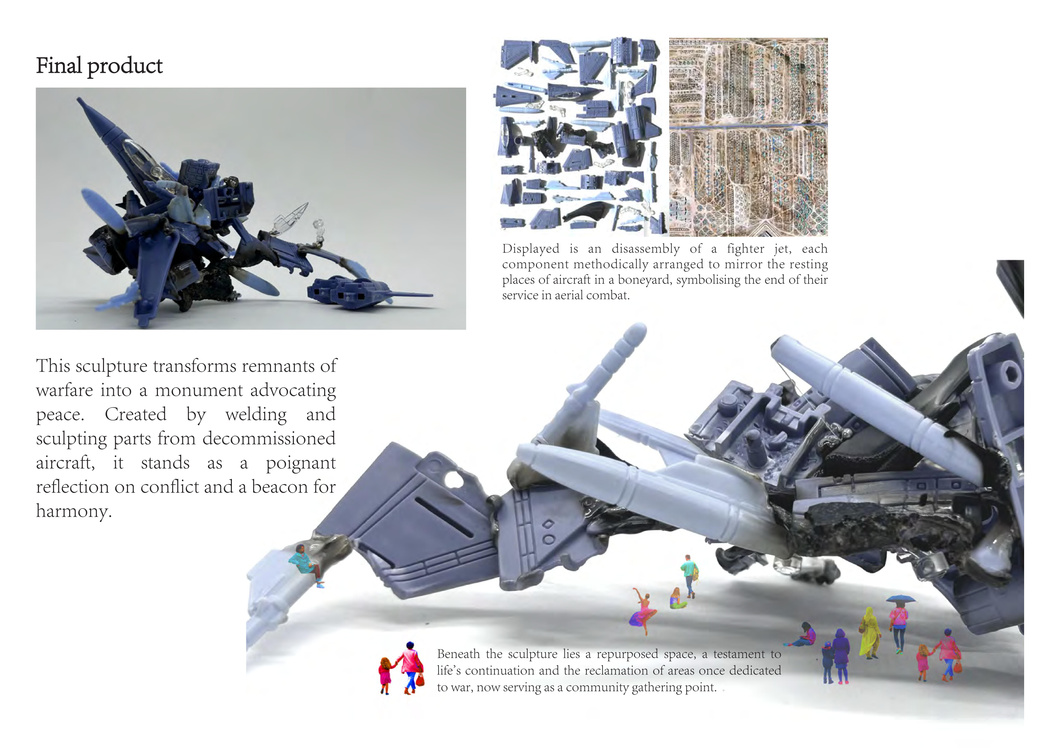
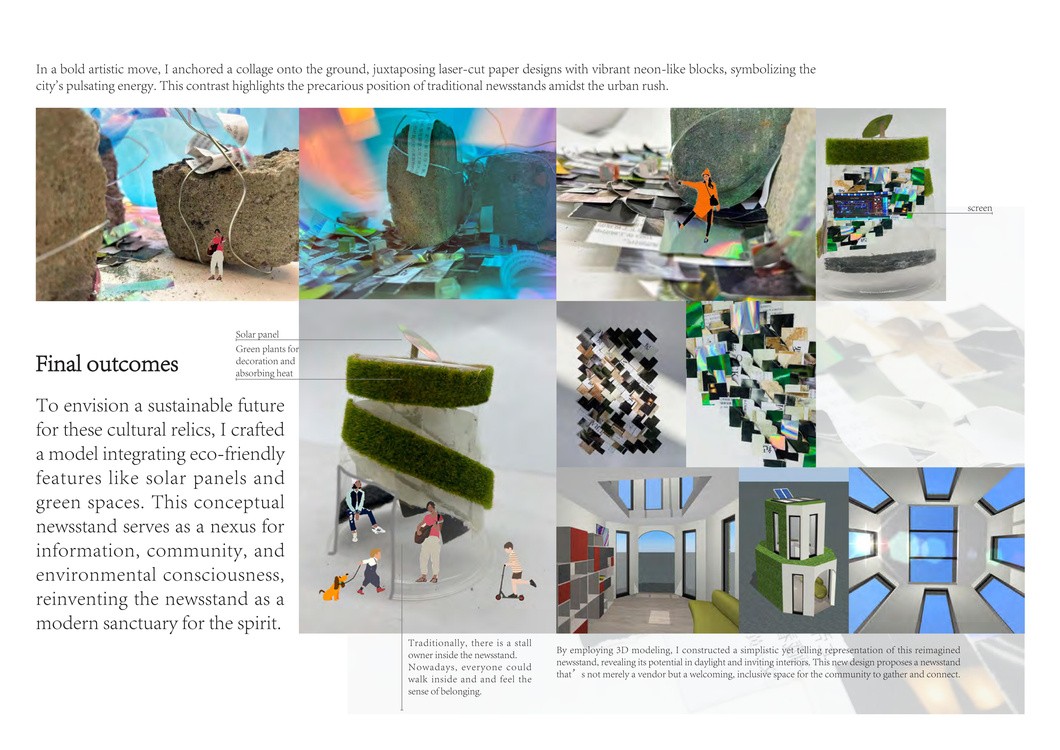

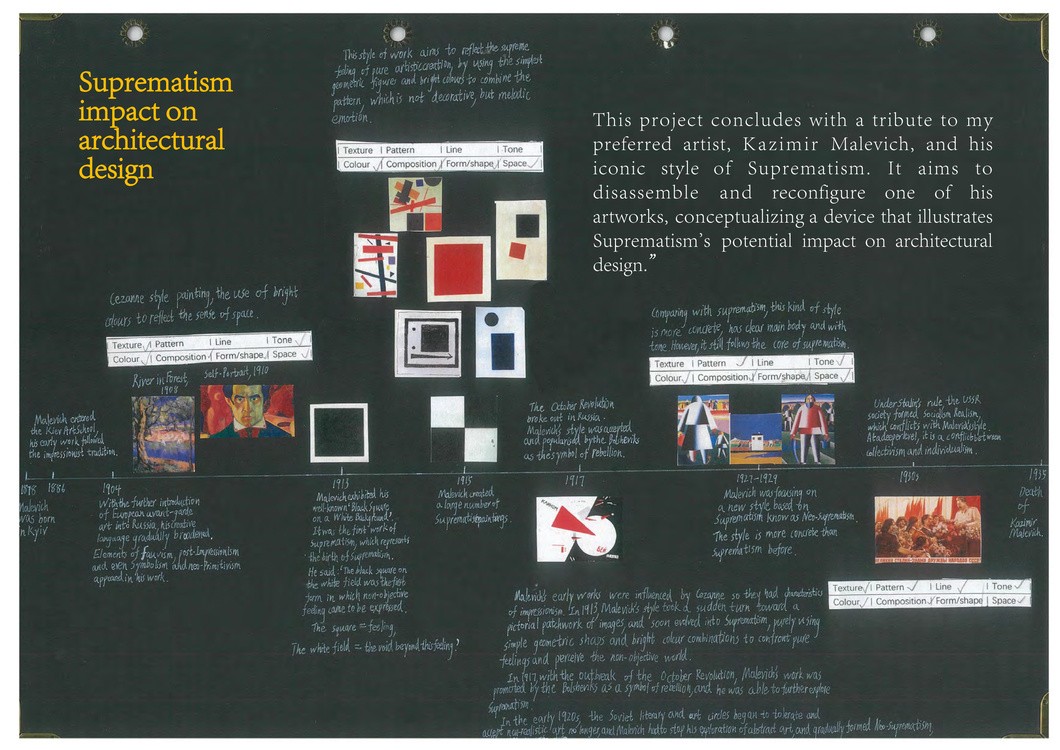

 AIVA公众号
AIVA公众号 小红书:AIVA当代首饰
小红书:AIVA当代首饰 AIVA当代首饰
AIVA当代首饰 AIVA国际课程中心
AIVA国际课程中心 沪公网安备 31010602004641号
沪公网安备 31010602004641号